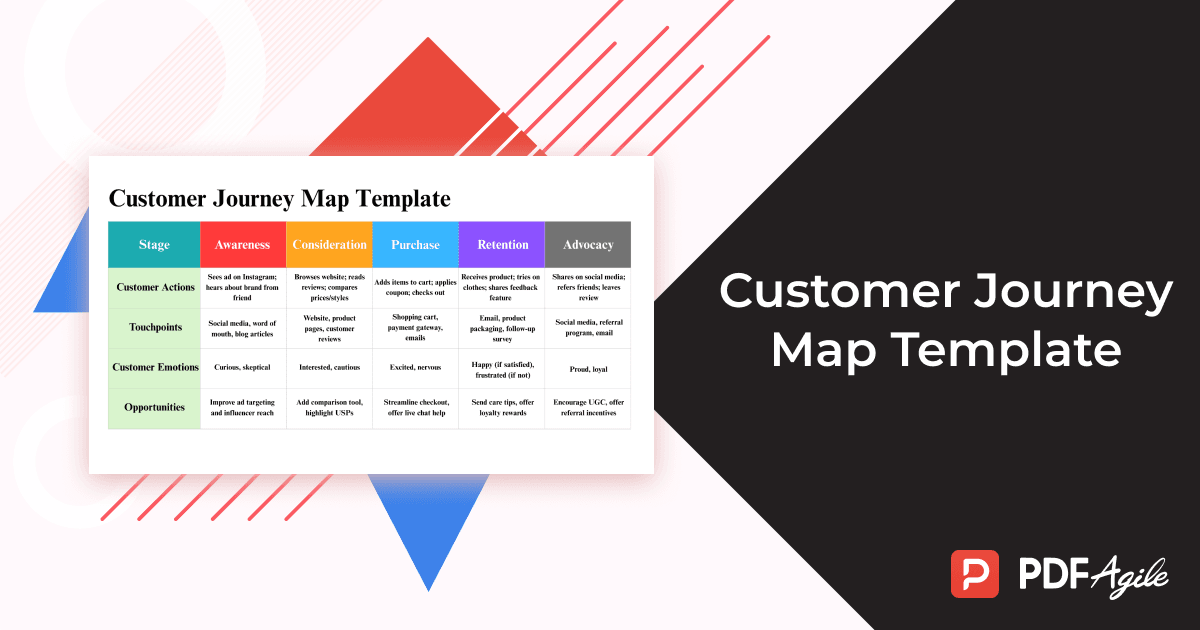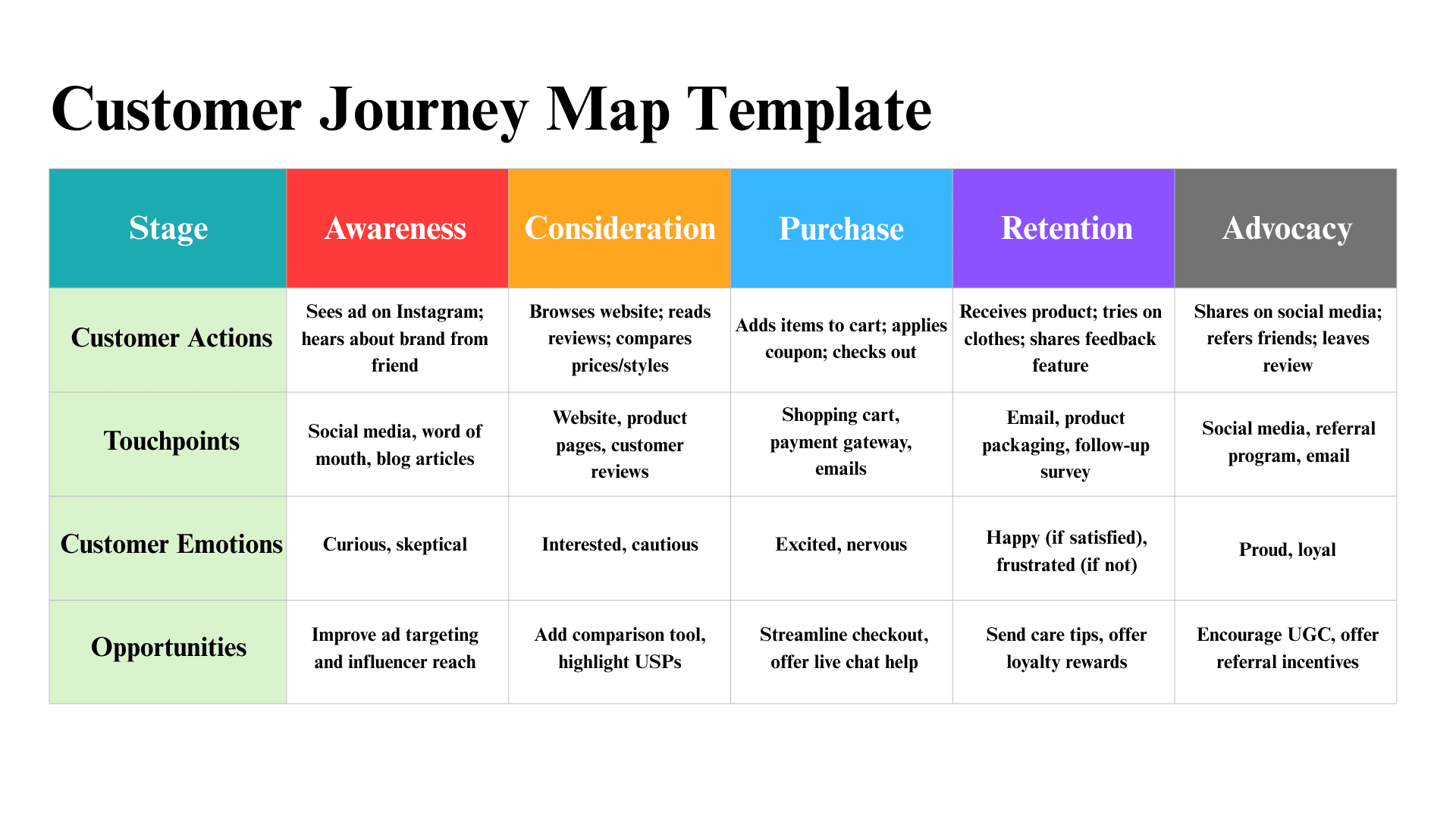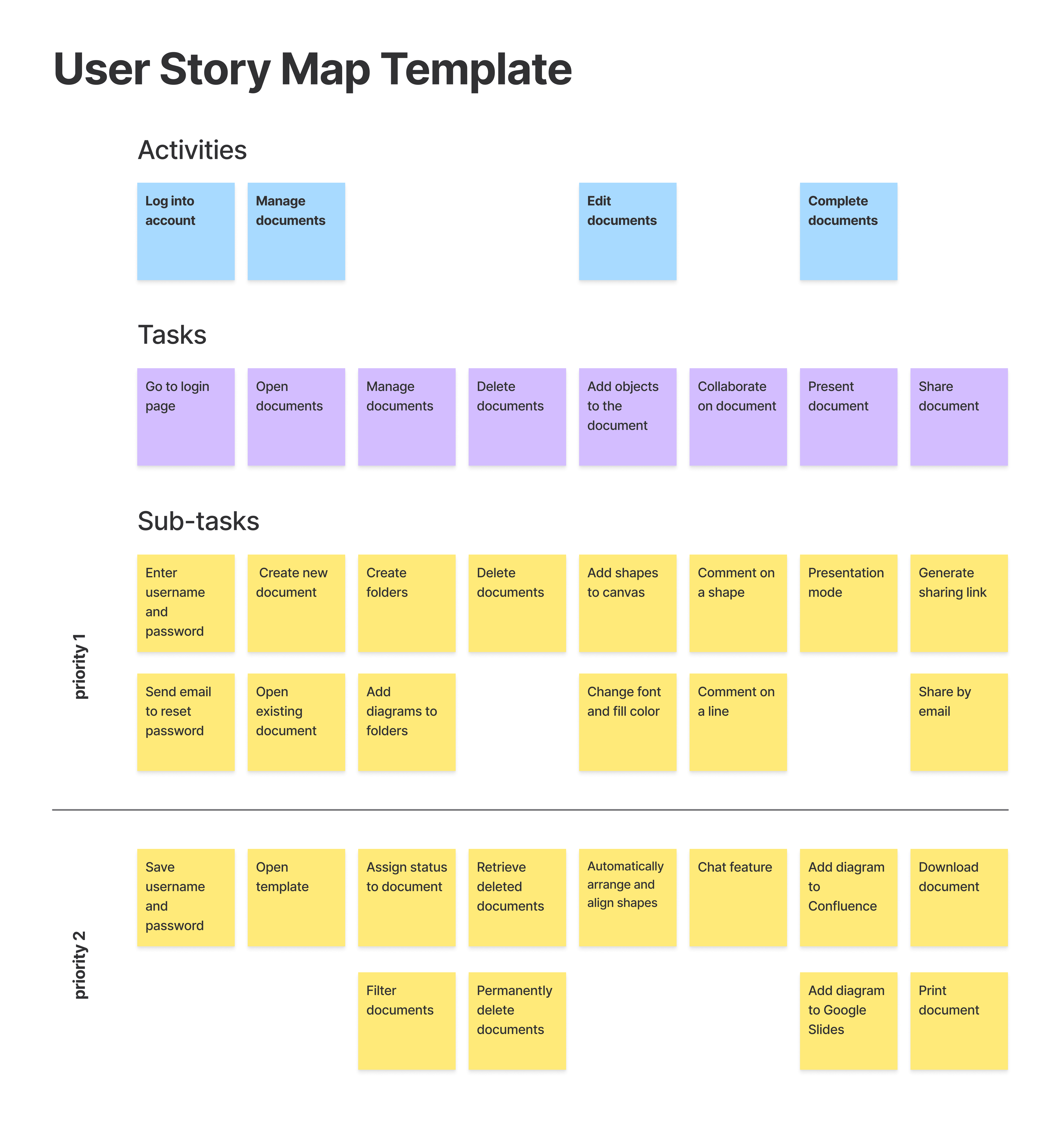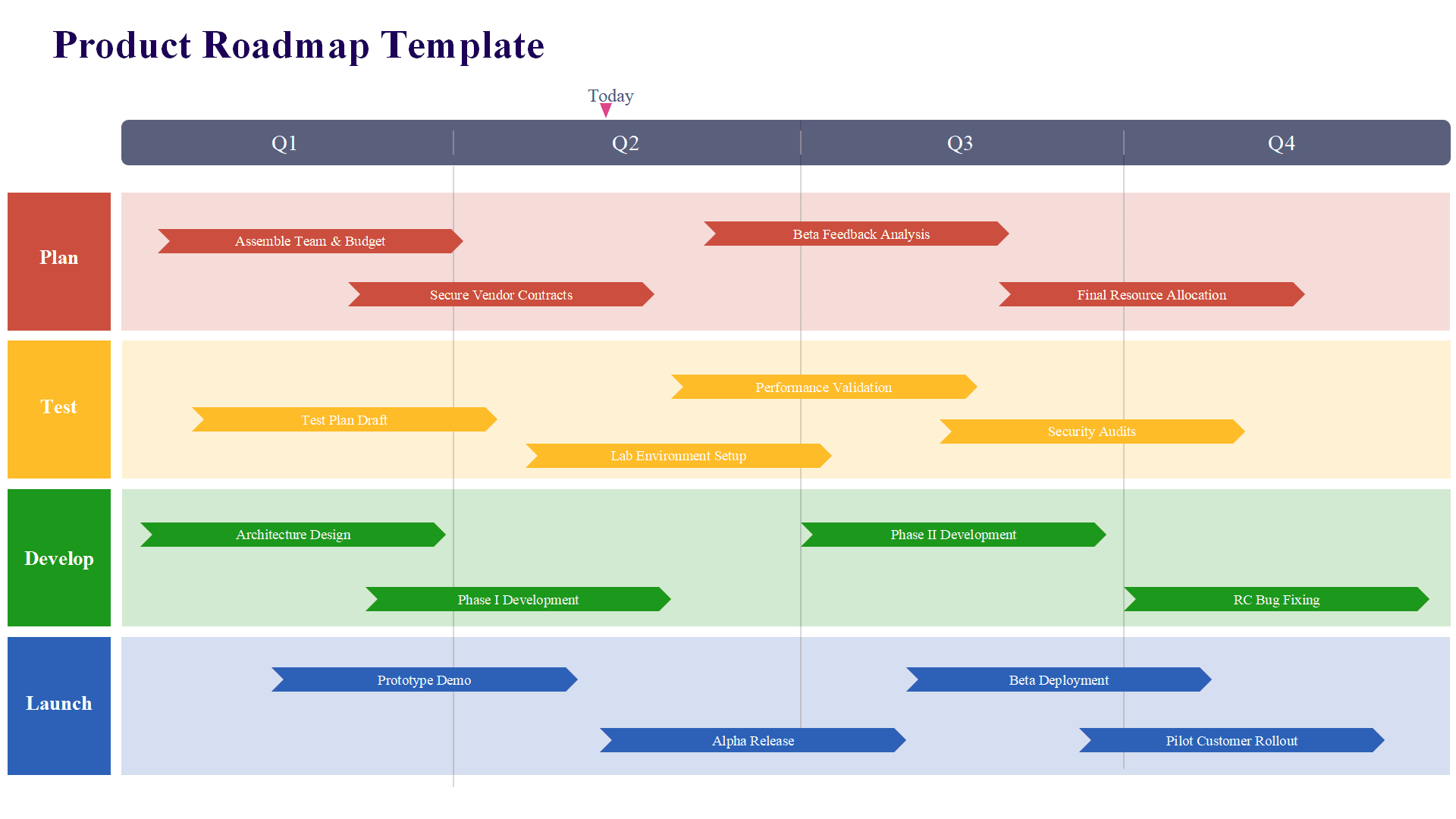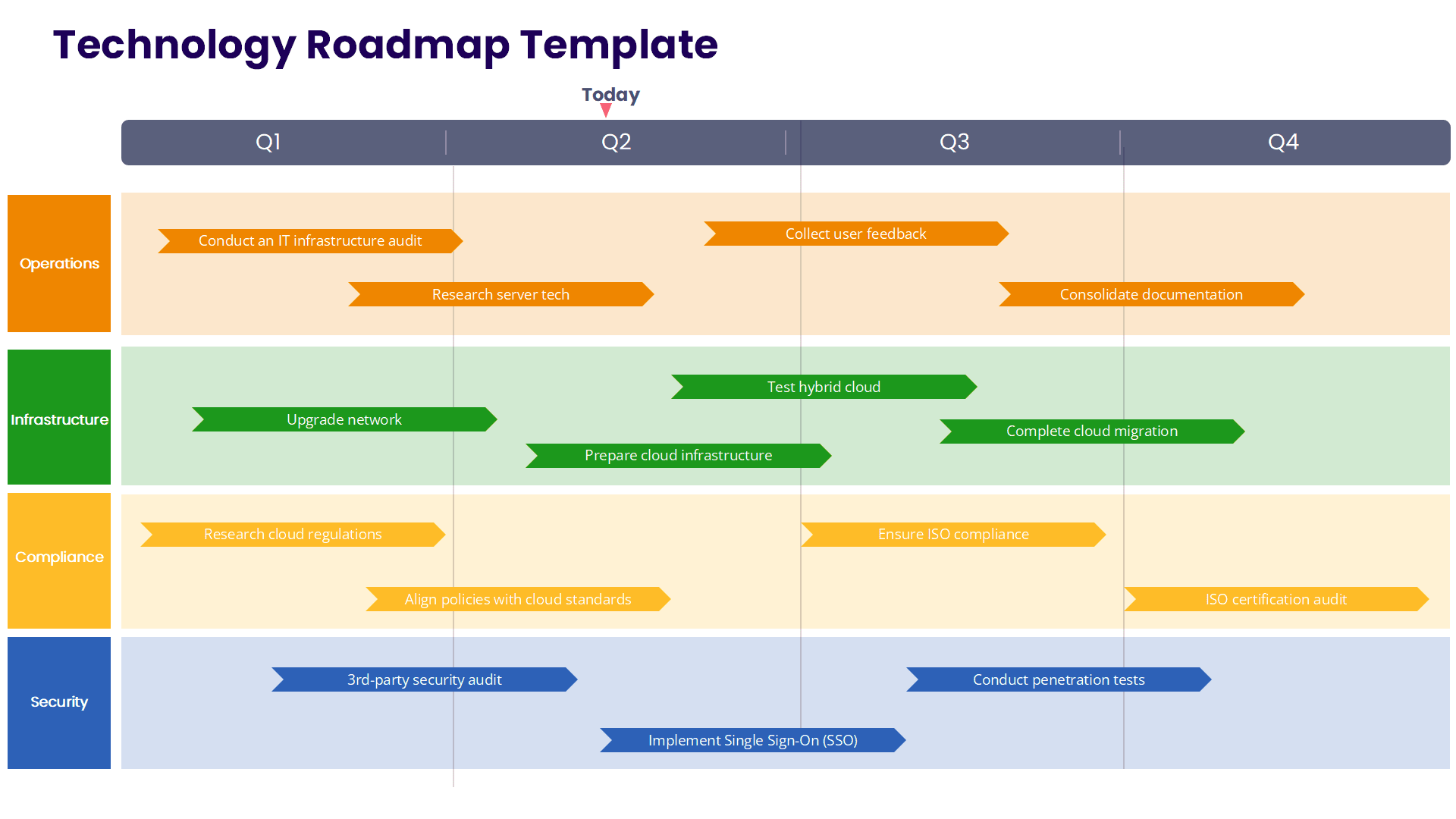Imagine walking in your customers' shoes, experiencing your brand exactly as they do. This level of empathy is crucial for any business striving for success in today's competitive environment. Understanding your customers' needs, anticipating their challenges, and optimizing their journey is no longer a luxury – it's a necessity. The customer journey map is your key to unlocking this understanding. This powerful tool visually lays out every interaction a customer has with your brand, from their very first encounter to becoming a devoted fan. Feeling overwhelmed at the thought of creating one? Don't worry! Customer journey map templates provide a user-friendly foundation, offering pre-built structures and guidance to effectively map, analyze, and ultimately enhance your customer's path to success with your brand. This guide will help you unlock the potential of these templates and point you in the right direction to find what you need.
What is a Customer Journey Map and Why Use a Template?
A customer journey map is a visual story of your customers' interactions with your brand across various touchpoints and channels. It provides a holistic view of their experience, highlighting their needs, pain points, emotions, and expectations at each stage.
Using a customer journey map template offers several advantages:
Saves Time and Effort: Templates provide a ready-made structure, eliminating the need to design one from scratch. This allows you to focus on gathering customer insights rather than the layout.
Ensures Consistency: Templates often include essential elements and stages, ensuring you don't miss crucial aspects of the customer journey.
Facilitates Collaboration: A standardized template makes it easier for teams to collaborate and contribute to the mapping process.
Provides a Starting Point: Templates can inspire your thinking and provide a framework to adapt to your specific business and customer needs.
Helps Visualize the Journey: The visual nature of templates makes it easier to understand the customer's perspective and identify areas for improvement.
How to Effectively Use a Customer Journey Map Template
Using a template is just the first step. Here's a guide on how to effectively leverage it:
Define Your Objectives and Scope: What specific customer segment or journey are you focusing on? What are your goals for creating this map?
Conduct Thorough Research: Gather data about your customers through surveys, interviews, website analytics, social media monitoring, and customer feedback.
Develop or Refine Your Personas: Ensure you have a clear understanding of your target audience's needs, motivations, and behaviors.
List All Possible Touchpoints: Brainstorm every interaction a customer might have with your brand, both direct and indirect.
Map the Current Journey (or Ideal Journey): Document the existing steps and experiences of your customers. Alternatively, you might want to map out an ideal future state.
Identify Pain Points and Moments of Truth: Pinpoint the critical decision points and areas where customers face challenges or have significant emotional responses.
Brainstorm Opportunities for Improvement: Based on the identified pain points, think about how you can enhance the customer experience.
Assess Resources and Assign Responsibility: Determine the resources needed to implement improvements and assign ownership to relevant teams.
Test and Iterate: Take the journey yourself, gather further feedback, and continuously refine your customer journey map.
Implement Changes and Track Progress: Put your identified improvements into action and monitor the relevant metrics to see the impact.
Customer Journey Map Example
To illustrate how a customer journey map template can be applied in practice, let's consider a simplified example for a clothing brand. This table outlines the key stages a customer might go through, from initially discovering the brand to becoming a loyal advocate, showcasing the actions they take, the touchpoints they interact with, their potential emotional state, and the opportunities this presents for the business.
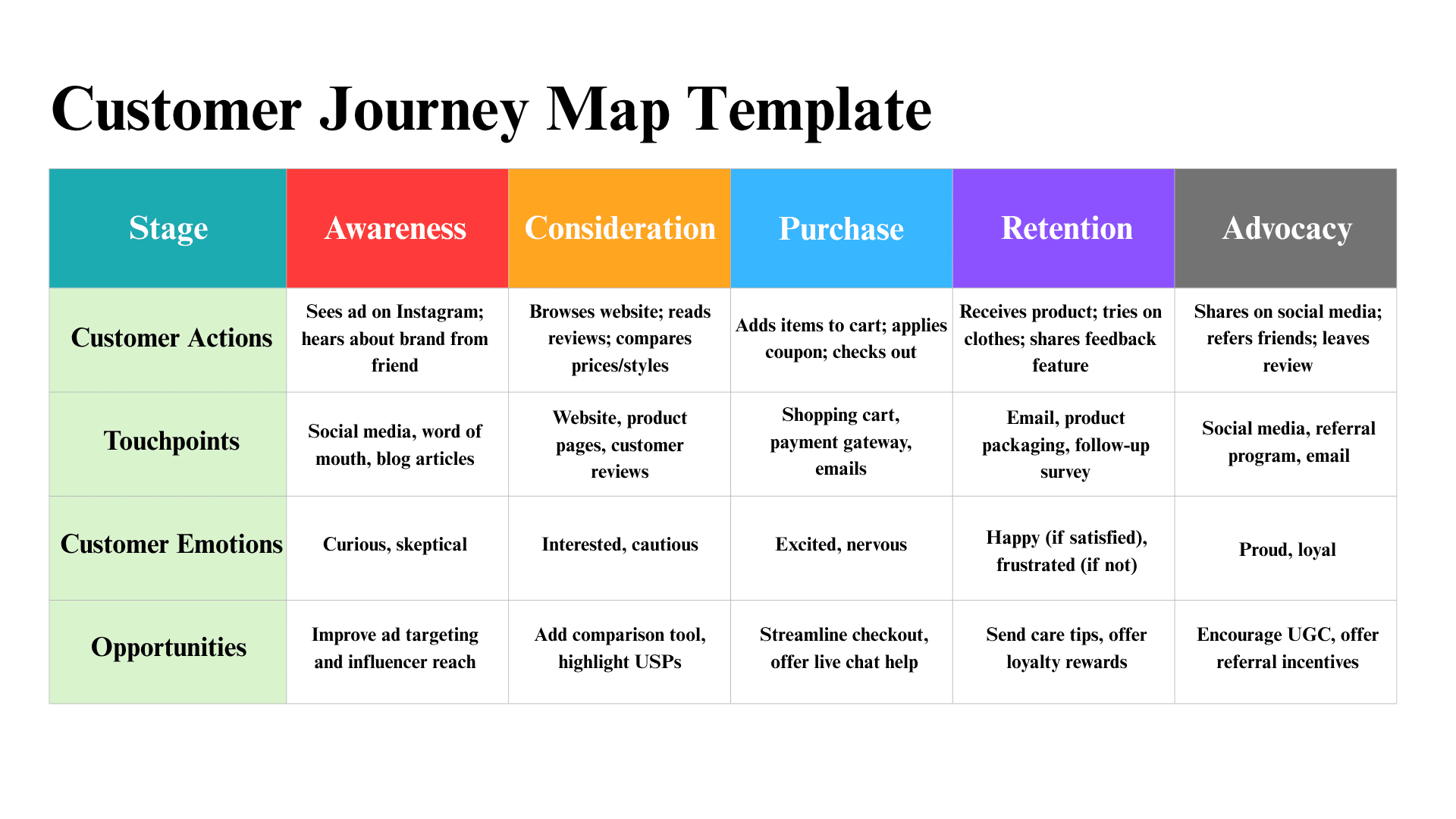
This example, while simplified, clearly demonstrates the value of using a customer journey map template. By breaking down the customer experience into distinct stages and considering the customer's perspective at each touchpoint, businesses can identify key areas for improvement and proactively work towards creating a more positive and seamless journey. Remember that this is just one example, and the specific stages, actions, and touchpoints will vary depending on your industry and target audience. The key is to use a template as a starting point and customize it to accurately reflect your unique customer experience.
FAQs about the Customer Journey Map Template
Q: How often should I update my customer journey map?
A: It's recommended to review and update your customer journey map at least annually. However, you should also revisit it whenever there are significant changes in your business, target audience, product or service offerings, or customer feedback indicates a shift in their journey.
Q: What's the difference between a customer journey map and a service blueprint?
A: While both visualize customer experiences, a customer journey map primarily focuses on the customer's perspective and their interactions with the brand. A service blueprint takes a broader view, including the internal processes, systems, and personnel involved in delivering that experience behind the scenes.
Q: How can I use a customer journey map to improve customer satisfaction?
A: By identifying pain points and negative emotions in the customer journey, you can pinpoint areas where improvements are needed. Addressing these issues, streamlining processes, and creating more positive touchpoints can directly lead to increased customer satisfaction and loyalty.
Q: Can customer journey maps be used for different industries or business models?
A: Yes, customer journey maps are a versatile tool applicable across various industries and business models. Whether you have a physical product, a digital service, or a complex B2B offering, understanding your customer's journey is crucial for success. The specific stages and touchpoints will differ, but the underlying principles remain the same.
Q: What are some common mistakes to avoid when creating a customer journey map?
A: Common mistakes include relying too heavily on assumptions instead of data, focusing only on the online journey and neglecting offline interactions, making the map too complex or too generic, and failing to use the map to drive actionable changes within the organization.
Free Download: Customer Journey Map Template
You can download the Customer Journey Map Template mentioned above by clicking Use Template button on this page. Customize it to fit your specific needs and preferences.
